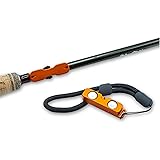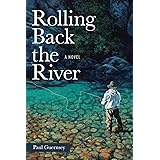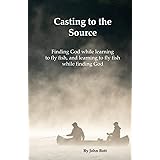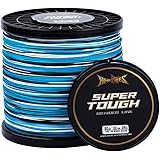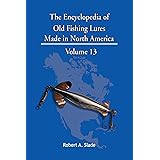Embarking on a truck camp trout fishing adventure offers a unique blend of rugged exploration and peaceful angling. As seen in the video above, these trips are less about trophy catches and more about the journey. They provide a direct connection with nature. This experience is often characterized by finding quiet, remote locations. Patience and preparation are often rewarded in these settings.
The Allure of Remote Truck Camp Trout Fishing
The call of the mountains is strong. Many anglers seek out isolated waters. Heading to higher elevations provides distinct advantages. It often means fewer crowds. It also promises pristine environments.
The narrator’s journey into the foothills highlights this desire. An hour and a half drive separates him from his chosen camping spot. These remote areas demand self-reliance. This is part of the appeal for truck campers. Such trips are about embracing the unknown. They are about discovering new fishing grounds. The anticipation builds with every mile driven.
Navigating Freshwater Fishing Regulations
Understanding local fishing regulations is extremely important. The narrator checks the fishing game freshwater regulations. This crucial step prevents legal issues. It also promotes sustainable fishing practices.
Fishing laws vary greatly. Regulations differ by state or region. Specific rules apply to individual rivers. Even sections of the same river can have unique guidelines. Key aspects to verify include:
- Season dates: “Most rivers around here are closed to trout fishing until the end of April.”
- Catch limits: “I can keep two fish here.”
- Size restrictions: Minimum or maximum lengths are often set.
- Permitted tackle: Some areas restrict bait or certain lures.
- Specific species rules: Different trout species may have distinct regulations.
Always consult official resources. This ensures compliance. A responsible angler respects these rules. Their existence helps protect fish populations.
Scouting Productive Fishing Spots
Finding the perfect fishing hole takes effort. Initial scouting is often done from the road. The narrator drives past a promising river stretch. He considers hiking down. Good routes to the water are not always obvious. Sometimes, moving on to the next promising spot is necessary.
Leveraging Technology for Better Scouting
Modern tools can enhance scouting efforts. The narrator uses a drone. This provides an aerial perspective. Drone footage reveals river features. It can highlight potential fishing pools. This method saves significant time. It allows for a broader view of the landscape.
Key features to look for include:
- Deep pools: These offer trout shelter and feeding grounds.
- Confluences: Where a “little stream meets the river.”
- Undercut banks: These provide cover for fish.
- Submerged structure: Rocks or fallen trees create eddies.
- Changes in current: Trout often position themselves where currents merge.
The narrator tries a “little tributary.” Later, a specific stream confluence is targeted. These are often prime locations. Trout gather there for food and cover.
Essential Gear and Lure Strategies for Wild Trout
A simple setup is often effective. The narrator begins with a “rooster tail spinner.” This is a popular choice for trout. Another option is the “Joe’s Fly Short Striker.” This indicates a preference for spinnerbaits. These lures are cast and retrieved. Their action attracts fish.
When bites are scarce, switching tactics is wise. “Nightcrawlers” are used when spinners fail. Natural bait can entice wary trout. A “split shot” adds weight. This helps the lure or bait sink. It positions it in the strike zone. No swivel is used for a simpler presentation. This minimizes line twist.
Casting Techniques for River Trout
Casting upstream is a common strategy. The lure or bait then drifts downstream. It mimics natural food sources. The angler reels in with the current. This presents the offering naturally. This technique often provokes bites. The narrator experiences “quite a few nibbles” using this method.
Wild rainbow trout and brown trout are sought after. They are known for their strong fight. Even if the fishing is slow, the experience remains valuable. “Not the best fisher in the world” does not diminish enjoyment. Persistence and adaptability are key. Six hours of fishing can yield only “a couple of bites.” This is a reality of wild trout fishing.
The Truck Camp Experience: More Than Just Fishing
The truck camp setup offers flexibility. It provides comfort in remote areas. The narrator finds a spot next to the “Notellum River.” Solitude is a major benefit. The entire place can be enjoyed alone. Basic amenities are typical. “Pit toilets” might be available. Running water is usually absent. Campers must be prepared for this.
Practical Comforts and Nature’s Beauty
A sleeping bag is essential for warmth. Fishing supplies are packed in a backpack. Water sandals are useful for stream crossing. Extra fishing gear is kept nearby. Reflectix panels were brought along. They help keep the camper warm. However, “it doesn’t feel like it’s gonna get that cold.” Sleeping with windows open becomes an option. Enjoying the natural beauty is paramount. The scenery is “absolutely gorgeous.” A “full moon tonight” adds to the ambiance. Waking up early, around “6:30 AM,” allows for more fishing time. A cup of coffee starts the day right. The early morning quiet is a favorite part of the experience.
Practicing Responsible Outdoor Ethics
Leaving no trace is fundamental. This principle protects natural spaces. “Pack in and pack out” means everything brought in must be taken out. This includes all trash. It even applies to food scraps. The narrator observes an example of poor practice. A “Popeye’s” wrapper is found. This highlights the importance of cleaning up. Respect for the environment is crucial. Future generations depend on it.
Adhering to Leave No Trace principles includes:
- Planning ahead and preparing.
- Traveling and camping on durable surfaces.
- Disposing of waste properly.
- Leaving what is found.
- Minimizing campfire impacts.
- Respecting wildlife.
- Being considerate of other visitors.
These guidelines ensure the beauty of “truck camp trout fishing” spots remains intact for everyone.


